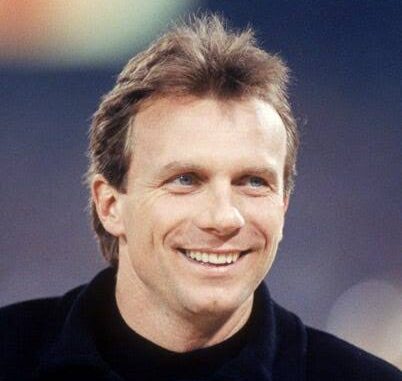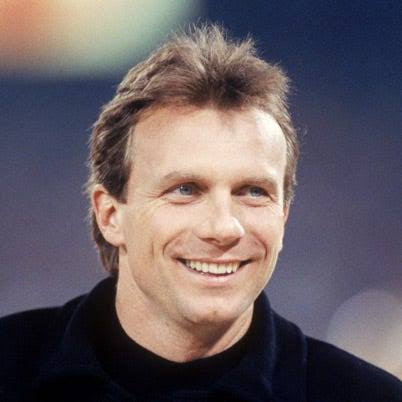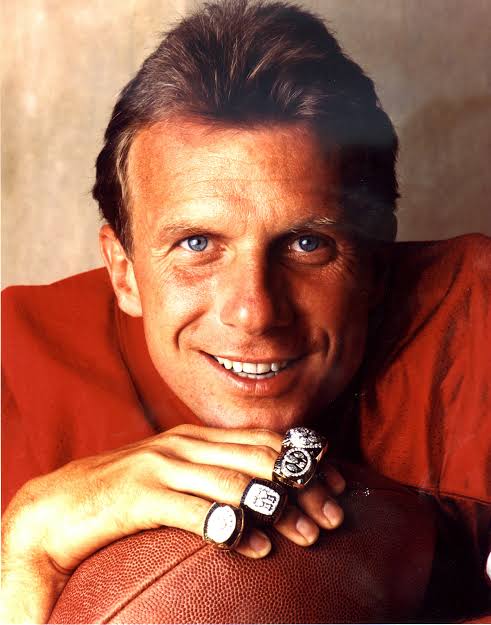
The iconic South Bend campus of the University of Notre Dame was abuzz with excitement as news spread like wildfire: Joe Montana, the legendary quarterback who had once led the Fighting Irish to a national championship, was returning to the club in a newly created role. Fans of the storied program couldn’t help but feel a mix of nostalgia and anticipation as they wondered what this development could mean for the future of Notre Dame football.

As a player, Joe Montana’s tenure at Notre Dame (1975-1978) was nothing short of spectacular. Under the guidance of legendary coach Ara Parseghian, Montana flourished, showcasing his trademark poise, accuracy, and clutch performances. He led the Irish to a 1977 national championship, cementing his place in the hearts of Fighting Irish fans everywhere. His iconic #3 jersey now hangs in the rafters of Notre Dame Stadium, a testament to his enduring legacy.

After leaving Notre Dame, Montana went on to enjoy a Hall of Fame career in the NFL with the San Francisco 49ers, winning four Super Bowl rings and earning numerous accolades. Though his playing days are long behind him, Montana’s connection to Notre Dame remained strong. He’d return to campus for various events, often speaking to current players and sharing his insights on the game.
The newly created role that Montana would fill was that of Special Assistant to the Head Coach. In this position, Montana would work closely with current head coach Marcus Freeman and his staff, providing guidance and mentorship to players, particularly quarterbacks. Given Montana’s wealth of experience and his deep understanding of the Notre Dame system, this role seemed tailor-made for the legendary quarterback.
When news of Montana’s hiring broke, fans took to social media to express their excitement. “Joe Montana returning to Notre Dame is a dream come true!” one fan tweeted. “This is huge for the program! Montana’s expertise will be invaluable to our quarterbacks,” another posted. The general sentiment was overwhelmingly positive, with many believing that Montana’s presence would help take the program to new heights.
In his first press conference since joining the program, Montana spoke about his new role and what he hoped to achieve. “I’m thrilled to be back at Notre Dame, and I’m looking forward to working with Coach Freeman and the players,” he said. “My main goal is to help these young men develop their skills and become the best versions of themselves on and off the field. I’m excited to share my knowledge and experience with them.”
Montana’s return to Notre Dame was met with widespread enthusiasm, and it’s clear that his presence will have a lasting impact on the program. As a mentor and advisor, he’ll play a key role in shaping the next generation of Fighting Irish stars. With his legendary status and infectious enthusiasm, Montana’s return is sure to bring a renewed sense of energy and excitement to the Notre Dame football program.
As the new season approaches, fans are eager to see Montana in action, working with the current crop of players. With his guidance, the Fighting Irish are sure to be a force to be reckoned with on the gridiron. The question on everyone’s mind, however, is: what’s next for Joe Montana and Notre Dame? Only time will tell, but one thing is certain – with Montana on board, the future looks bright for the Fighting Irish.
In related news, current Notre Dame quarterback Tyler Buchner expressed his excitement about working with Montana. “Joe Montana is a legend, and I’m honored to have the opportunity to learn from him,” Buchner said. “His experience and knowledge will be invaluable to me and the entire team. I’m looking forward to soaking up as much information as I can from him.”
The addition of Montana to the coaching staff is a significant move for the Fighting Irish. With his expertise and guidance, the program is poised for continued success. As the season unfolds, fans will be watching closely to see how Montana’s presence impacts the team. One thing is certain, however: Joe Montana’s return to Notre Dame is a welcome development that promises to bring excitement and enthusiasm to the program.
In the months that followed, Montana threw himself into his new role, working closely with the players and coaching staff. He spent countless hours reviewing game footage, offering advice on technique, and sharing stories of his playing days. His presence was felt throughout the program, from the weight room to the meeting rooms.
As the season progressed, the impact of Montana’s involvement became clear. The quarterbacks, in particular, seemed to flourish under his guidance. Buchner, in particular, showed marked improvement, displaying a newfound confidence and poise in the pocket. The team’s overall performance also improved, with the Fighting Irish racking up wins against tough opponents.
In the end, the season was a resounding success, with Notre Dame finishing with a strong record and earning a coveted spot in a major bowl game. As the players celebrated their achievements, Montana looked on with pride, knowing that he’d played a small part in their success. His return to Notre Dame had been a resounding success, and he looked forward to many more years of contributing to the program he loved.
Leave a Reply